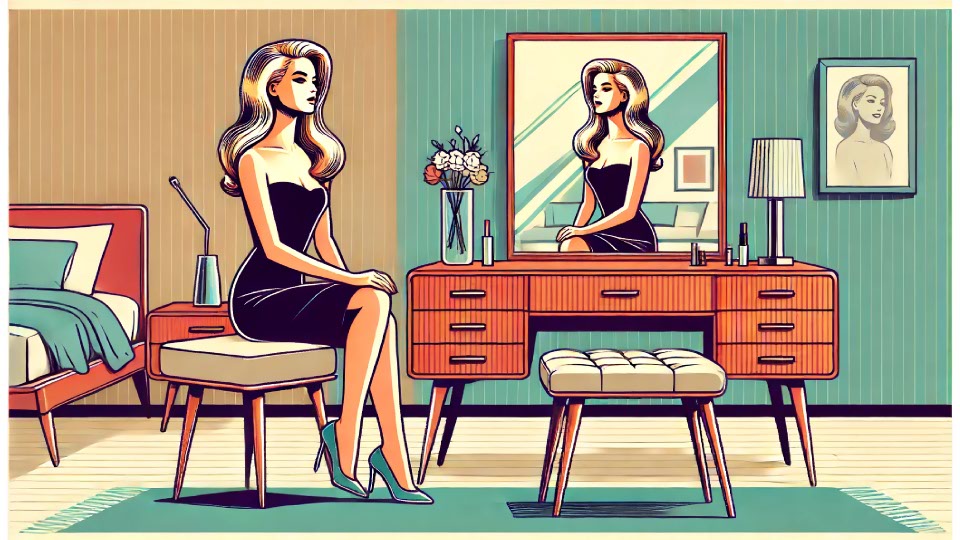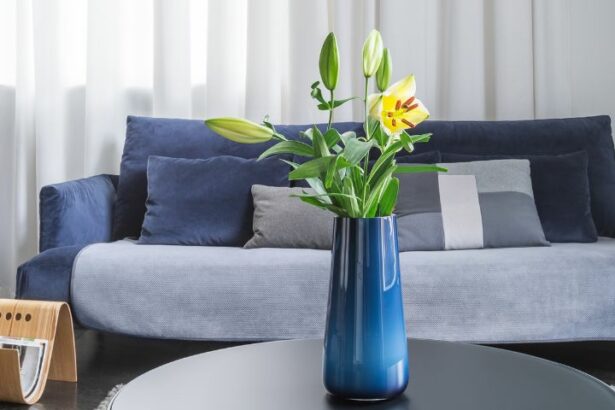Dressing tables, often seen as symbols of elegance and luxury, have a rich and varied history that spans centuries and cultures. From their ornate origins in French boudoirs to their modern, multifunctional designs, these pieces of furniture have evolved significantly. Whether serving as a practical space for daily routines or a statement piece in a bedroom, dressing tables offer more than meets the eye. In this blog post, we delve into some intriguing fun facts about dressing tables, exploring their history, cultural significance, and modern-day transformations.
As we uncover the stories behind these timeless pieces, you’ll discover how dressing tables have not only been a functional aspect of daily life but also a reflection of societal changes and personal identity. Join us on this journey through the vanity chronicles and gain a deeper appreciation for this quintessential element of home decor.
The Historical Journey of Dressing Tables
Dressing tables, or vanities, first gained popularity in the 17th century, particularly in France. These early versions were extravagant, often crafted from expensive materials like mahogany and adorned with marble tops. They quickly became a symbol of luxury and wealth, often found in the boudoirs of the elite. As the trend spread across Europe, each country added its unique twist to the design, reflecting local tastes and materials.
In Japan, the dressing table, known as a “kyodai,” emerged with a much simpler and more functional design. Reflecting the minimalist aesthetic of Japanese culture, these tables were typically small, with clean lines and practical features. This contrast highlights the diverse approaches to personal grooming and decor across different cultures and eras.
The Influence of Hollywood Glamour
The glamour of Hollywood played a significant role in cementing the status of dressing tables as symbols of sophistication. Classic films often depicted stars getting ready at their elegant vanities, creating an image of luxury and allure. This portrayal resonated with the public, leading to an increased demand for dressing tables that could replicate the Hollywood starlet experience at home.
Modern dressing tables continue to draw inspiration from this era, often incorporating vintage elements like mirrored surfaces, tufted stools, and ornate frames. The association with Hollywood glamour adds a timeless appeal, making these pieces a favorite among those looking to add a touch of classic elegance to their spaces.
Functional Evolution of Dressing Tables
While the aesthetic appeal of dressing tables is undeniable, their functionality has also evolved significantly over the years. Modern designs often come equipped with built-in lights, power outlets, and USB ports, catering to the needs of contemporary users. This transformation reflects a shift from purely decorative pieces to practical, multifunctional furniture.
The integration of technology into dressing tables has made them more versatile and user-friendly. Whether it’s a well-lit mirror for perfect makeup application or a convenient charging station for gadgets, today’s dressing tables are designed to enhance the daily routines of their users.
Psychological Benefits of a Personal Vanity Space
Having a dedicated space for getting ready can have positive effects on one’s mental well-being. A dressing table creates a routine and a personal area where individuals can focus on self-care and preparation for the day. This practice can contribute to a sense of calm and organization, setting a positive tone for the day ahead.
Creating a Personal Sanctuary
A dressing table can serve as a personal sanctuary, a space where one can indulge in self-care rituals and take a moment to focus on themselves. This personal space can be a reflection of one’s style and personality, with carefully chosen decor, beauty products, and accessories. The act of getting ready becomes a mindful practice, enhancing overall well-being.
Routine and Organization
Having a dedicated dressing table helps in maintaining an organized routine. With designated spaces for makeup, skincare, and accessories, it becomes easier to find what you need and streamline your morning or evening routine. This organization can reduce stress and save time, contributing to a more efficient and enjoyable daily ritual.
Design Trends in Modern Dressing Tables
The design of dressing tables has come a long way from their ornate beginnings. Today’s trends lean towards minimalism, with clean lines and functional features. Mid-century modern designs are particularly popular, featuring natural wood finishes, simple hardware, and a focus on functionality without sacrificing style.
Mid-Century Modern Aesthetics
Mid-century modern dressing tables are characterized by their sleek lines and minimalist design. These pieces often feature natural wood finishes, tapered legs, and understated hardware. This design trend emphasizes functionality and simplicity, making it a popular choice for contemporary homes.
Customizable and Multifunctional Designs
Modern dressing tables often offer customizable options to suit individual needs. From adjustable mirrors and built-in lighting to modular storage solutions, these designs cater to the diverse requirements of users. Multifunctional dressing tables can also serve as desks or console tables, making them a versatile addition to any room.
Dressing Tables in Pop Culture and Media
Dressing tables have been a staple in pop culture, often symbolizing glamour and personal transformation. From classic films to contemporary TV shows, these pieces of furniture have played a significant role in shaping their image and appeal.
Iconic Film Appearances
Many iconic films have featured dressing tables, reinforcing their association with glamour and elegance. Scenes of characters applying makeup, styling hair, or contemplating their reflection have become cinematic staples. These portrayals have helped to maintain the dressing table’s status as a symbol of beauty and sophistication.
Contemporary Media and Influencers
In the age of social media, dressing tables have gained new significance. Influencers and beauty gurus often showcase their vanity setups in videos and posts, inspiring their followers to create their own stylish and functional spaces. This trend has further popularized dressing tables, making them a must-have for anyone interested in beauty and fashion.
DIY Dressing Table Projects
For those who enjoy hands-on projects, creating a DIY dressing table can be a rewarding experience. With a little creativity, old desks or tables can be transformed into unique and personalized vanities. This approach not only saves money but also allows for a custom piece that perfectly fits one’s style and space.
Repurposing Furniture
One of the most popular DIY approaches is repurposing existing furniture. An old desk, console table, or even a vintage sewing machine table can be given new life as a dressing table. With some paint, new hardware, and a stylish mirror, you can create a one-of-a-kind piece that adds charm and functionality to your room.
Adding Personal Touches
DIY dressing tables offer the opportunity to add personal touches that reflect your style. From choosing the perfect mirror and lighting to selecting storage solutions and decorative elements, every aspect can be customized. This personalization makes the dressing table not just a piece of furniture, but a reflection of your personality and taste.
Feng Shui and Dressing Table Placement
In Feng Shui, the placement of a dressing table can influence the flow of energy in a room. Proper placement and organization can enhance positive energy and create a harmonious environment. These principles can help you make the most of your dressing table space, promoting balance and well-being.
Optimal Placement for Positive Energy
According to Feng Shui principles, the placement of a dressing table can significantly impact the energy flow in a room. It is often recommended to position the dressing table away from the bed and to avoid placing it directly in front of a door. This arrangement helps to create a balanced and harmonious environment.
Clutter-Free and Organized
Keeping the dressing table clutter-free is essential in Feng Shui. A clean and organized vanity promotes positive energy and a sense of calm. Regularly decluttering and organizing your dressing table can help maintain this positive flow, contributing to a more serene and balanced space.
Space-Saving Dressing Table Solutions
For those with limited space, finding the right dressing table can be challenging. Fortunately, there are many space-saving solutions available, from foldable designs to wall-mounted options. These innovative designs maximize functionality while minimizing the footprint, making them ideal for small apartments or bedrooms.
Foldable and Compact Designs
Foldable dressing tables are perfect for small spaces. These designs can be easily tucked away when not in use, freeing up valuable floor space. Compact designs often include clever storage solutions, such as hidden drawers and shelves, to keep everything organized without taking up too much room.
Wall-Mounted Vanities
Wall-mounted vanities are another excellent option for small spaces. These designs can be attached to the wall at the desired height, creating a floating effect that adds a modern touch. Wall-mounted vanities often include built-in mirrors and lighting, making them a stylish and functional choice for any room.
To sum it up
Dressing tables are more than just functional pieces of furniture; they are steeped in history and cultural significance. From their luxurious origins to their modern, multifunctional designs, dressing tables have evolved to meet the changing needs and tastes of different eras and societies. Whether you’re inspired by Hollywood glamour or looking for a minimalist, space-saving solution, there’s a dressing table to suit every style and need. By understanding the history and versatility of these pieces, you can create a personal sanctuary that enhances your daily routine and reflects your unique style.




